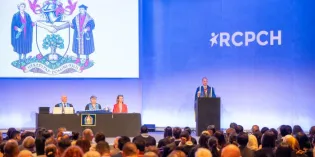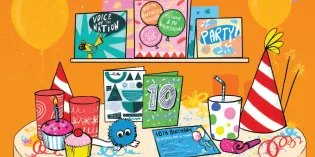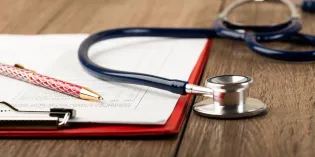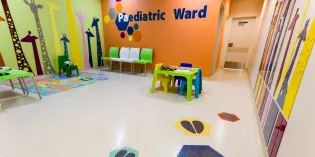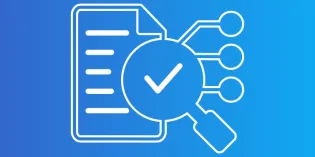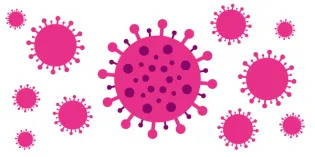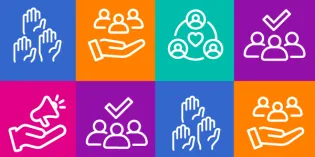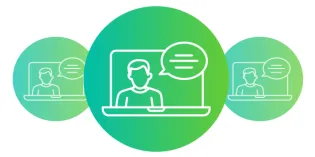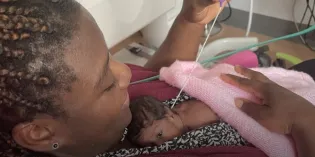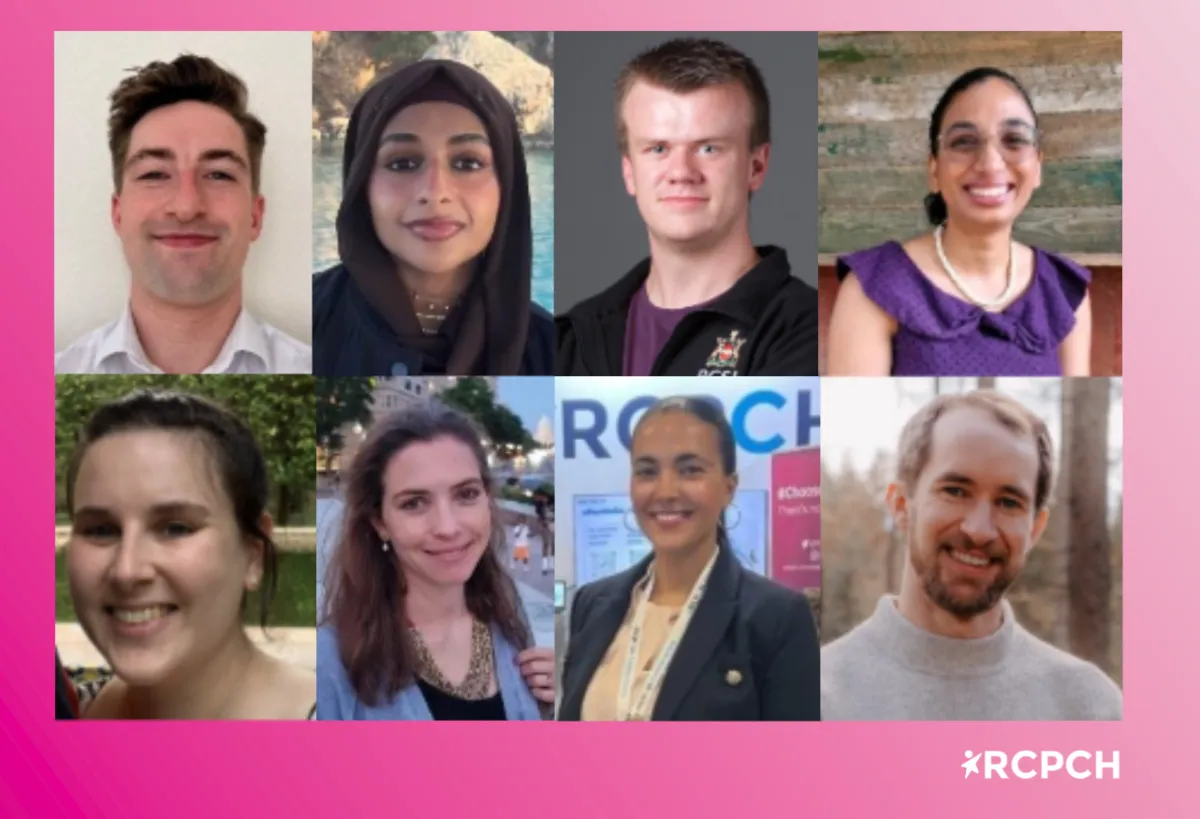
Whether you’re a student just starting out or a consultant shaping local culture and education — these voices offer valuable insights for making care safer for children, and for those delivering it. Contributors reflected on the following five areas:
- Everyday safety – including the biggest safety risks, simple safety initiatives, and what good safety culture looks like
- Education and training – from creating safe learning environments to improving safety training and involving families early on
- Wellbeing – how we can protect ourselves and each other from burnout and fatigue, and tips for recovering after challenging shifts or incidents
- Trainee involvement in safety improvement – from leading projects, to recognising the value and influence trainees bring
- Practical tips - what teams could do to improve safety, and top resources
'Patient safety in paediatrics is at the foundation of all that we do to provide good patient care and to keep little people safe in an environment of big risks.' – Alisdair, ST8
This blog was produced for the RCPCH Safety eBulletin.
1. Everyday safety
What are the biggest safety concerns for children and young people?
Drawing on their experience, trainees raised known high-risk areas such as medication errors, mental health, and inequalities, alongside evolving risks such as e-scooter handlebar injuries and digital harms.
'As demonstrated by national reviews, some services have deficiencies in care for mothers and babies, particularly for those from black and ethnic minority backgrounds.' – Ramyia ST7
'The excessive availability of screens rather than outdoor activities, is concerning for the overall well-being of children and their social skill development.' – Clinical Fellow
Their concerns are supported by national data, for example, up to 1 in 5 inpatient paediatric prescriptions contain an error, and black babies are approximately three times as likely to die in the first month of life compared to white babies.
Can you share an example of a great safety initiative?
With medication errors a key safety risk for CYP, trainees shared practical initiatives to reduce harm:
'In one of my departments, they made a prescribing station in a quiet corner where no one would disturb the prescriber, and avoided routine prescribing when doctors are busy or in the middle of a task' – Clinical Fellow
'A lot of significant errors in neonates have been related to prescribing by weight. An Emergency Department I worked in weighed every baby under 3 month twice separately before the administration of IV antibiotics.' - Sarah, ST5
What does a good safety culture look like?
Flexible hierarchies, valuing all voices – especially CYP and families – and a psychologically safe, no-blame, culture are key for trainees.
'Fostering open communication about safety concerns without fear of judgement, having mentors who advocate for best practices in patient care, and ensuring access to educational resources and safety protocols.' – Shaden, ST5
Joseph, a Foundation Doctor, shares a positive example from a recent paediatric A&E taster week: 'Something that notably contributed to the safety culture was having a named safeguarding lead, who was accessible and approachable. As a result, I felt confident escalating concerns.'
2. Education and training
What makes a training environment feel safe?
Trainees valued shared decision-making with families, celebrating excellence, clear and realistic training expectations, and embedding safety and learning into daily practice. Several also flagged the risks from over-medicalisation and over-investigation.
'Respect, inclusion, clear expectations, defined learning objectives, and supportive supervision make me feel safe.' – Aisha, Foundation Doctor
'Rotations where every ward round, handover, and patient discussion is a learning opportunity encourage juniors to ask questions, challenge management decisions thoughtfully, reflect on mistakes, and receive structured feedback.' – Aiesha, ST4
How could training on safety be improved?
Students and trainees noted growing emphasis on formal safety training, but much of it remains e-learning or theoretical. Simulation, interactive teaching, and real-time experience were seen as more valuable. Opportunities to engage in safety governance were also seen as limited, and trainees wanted inductions and practice in risk reporting. Confidence in safety governance often came only through extra learning, sometimes out-of-programme.
'Joining safety huddles or reflecting on real incidents, would make it more relevant and memorable' Student and RCPCH&Us member
'Late in training, I realised I had little understanding of local clinical governance and risk management systems. A consultant supported me in attending meetings, which positively changed how I think about patient safety. I recommend all trainees get involved in local governance—it’s invaluable.' – Alasdair, ST8
Trainees, including those with experience as part of RCPCH&Us, highlighted the need for training and practical experience on involving CYP and families in safety conversations early on:
'Trainees need examples of how these conversations are done, what parents and children find helpful, and what they find challenging.' – Sarah, ST5
'It is important to teach the language to use to invite feedback from CYP, without it coming across as routine-like or triggering. I also think that trainees should be encouraged to have debriefs with families after incidents.' - Student and RCPCH&Us member
3. Wellbeing
How can we protect ourselves and colleagues from burnout and fatigue?
'With increasing pressures and staffing shortages protecting staff from burnout and fatigue is essential for patient safety.' – Alasdair, ST8.
One trainee explained that adequate staffing, realistic training expectations, and a departmental strategy for addressing burnout are essential. When teams feel safe to speak up, professional psychological support should be accessible if needed.
How do you recover from an emotionally challenging shift or safety incident?
Andrew and Sarah share their tips for protecting colleagues, including raising non-urgent safety incidents at an appropriate time, such as not overnight, and recovering from emotionally challenging shifts or incidents:
'Fatigue risk is real. On busy night shifts, I often feel guilty stopping to eat or rest, so I encourage my SHO to take breaks.'- Sarah, ST5
'Debriefing with peers early helps. Knowing everyone did their role and followed correct systems reassures me, even if outcomes are upsetting. A supportive team and robust safety procedures help build resilience.' – Andrew, Senior House Officer
4. Trainee involvement in safety initiatives and QI
Have you been involved in any safety initiatives or quality improvement (QI) projects?
Trainees shared a range of impactful projects from reducing unnecessary post-natal separations of mothers and babies to reducing liquid antibiotic prescriptions in primary care, to decrease dosing errors, wastage, and environmental impact. The importance of meaningful family engagement, and a proactive approach were highlighted:
'Early communication with parents about common presentations and clear safety netting gave them confidence to engage in criteria-led discharge.' – Andrew, Senior House Officer
'I’ve helped trial a local patient safety newsletter, the ‘safety synopsis,’ to share learning and promote positive safety initiatives. We aim to make it engaging and a tool to encourage involvement in safety meetings.' – Alasdair, ST8
Power and Contribution as Trainees
Our contributors stressed the importance of remembering your value and contribution to patient safety incidents, discussions and improvement projects as trainees.
Charlotte, ST4, gives an example of how medication safety is everyone’s responsibility: 'Even as trainees, we can improve medication safety by recognising limits, consulting guidelines and colleagues, being honest when errors occur, and learning from mistakes to change practice.'
5. Practical tips
What’s one thing every paediatric team could do to improve safety?
Shifting the focus from reactive to proactive and preventative safety, involving CYP, and adopting and modelling a no blame open culture were key takeaways from our trainees:
'Always try to elicit and incorporate the voice of the child and family in decision-making to ensure their concerns and viewpoints are heard and addressed.' – Ramyia, ST7
'Promote educational campaigns for families highlighting injury prevention, such as the benefits of helmets, to support harm prevention.' – Shaden, ST5
Can you share an example of a great safety resource?
'I recommend the Learning from Excellence (LfE) website and its ‘resources for implementing LfE’ section for tips on sharing and celebrating excellence. Also, the RCPCH patient safety portal offers great podcasts and resources showcasing impactful safety initiatives.' – Alasdair, ST8
'The Support for Patients and Families resource on learn-together.org.uk is brilliant. It shows how clinicians can learn from adverse incidents directly from patients and families to prevent future harm.' – Ramyia, ST7
Conclusion
These insights highlight enduring and emerging risks, the importance of wellbeing, culture, and a proactive approach to safety, and the impact of simple, practical initiatives on priority safety areas.
Trainees value being involved in safety incidents and improvement from the start, in partnership with children, young people and their families, to build confidence, resilience, and skills. Trainers can support these opportunities, and trainees should feel empowered to seek them out.
By recognising and supporting trainees as learners and leaders in safety, we can continue to make paediatric care safer – together.
Thank you to our student and trainee contributors:
- 1st year medical student and RCPCH&Us member
- 2nd year medical student and RCPCH&Us member
- Dr Joseph Pickles, FY1 Doctor, Manchester
- Dr Aisha Noor-Ul-Huda, FY1 Doctor, Durham
- Clinical Fellow, London
- Dr Andrew Dore, Senior House Officer, Dublin
- Dr Aiesha Alexander, ST4, West Midlands. RCPCH Digital Trainee Representative
- Dr Charlotte King, ST4, Mersey Region, RCPCH-NPPG Medicines Committee Trainee Representative
- Dr Sarah Grantham-Hill, ST5, London
- Dr Shaden Zuhairy, ST5, Newcastle upon Tyne
- Dr Ramyia Elangovan, ST7, London, RCPCH Clinical Quality in Practice Committee Representative
- Dr Alasdair Campbell, ST8, Edinburgh

